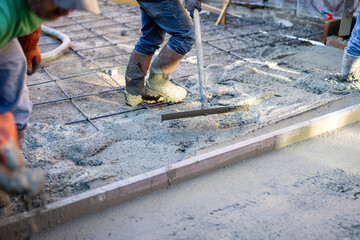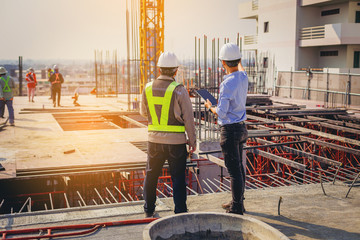
The extent of driveway damage significantly influences repair costs. Structural issues cost more than filling minor cracks and potholes. Sinking areas that require foam, mud, or sandjacking are also more expensive than simple leveling.
Typically, if more than 25% of your driveway has damage, it’s time to call in the professionals. Other factors also influence repair prices. For reliable and affordable solutions, contact experts in driveway repair Nashville.
Cost of Materials
Driveway repair costs can vary widely, depending on the type of materials used. Concrete repair can cost $1 to $3 per linear foot, while asphalt repairs run a little higher at $100 to $500 on average. Filling in cracks or potholes costs around $5 to $10 for sealant and $8 to $30 for ready-mix patching compounds. Repairing surface damage like ruts, small holes and fading color with gravel or stone is less expensive at around $2 to $4 per square foot.
A damaged driveway is not only unsightly, but it can also cause safety problems and damage vehicles. It’s a good idea to call a professional to inspect your driveway and determine the best course of action. Whether you need to repair minor cracks, resurface the entire driveway or replace it entirely, getting estimates from multiple contractors will help you budget accurately for your project.
The best way to estimate your driveway repair costs is to consult with a professional contractor that has experience with your particular material and type of damage. A reputable company will provide references, a portfolio of past work and a detailed written estimate. In addition, they should be properly licensed and insured, and offer a warranty on their work.
Generally, repairing a concrete driveway makes more sense than replacing it. However, if your driveway has recurring problems, such as sinking sections of concrete, it may be time to consider replacement. In these cases, it’s best to hire a concrete contractor for a full inspection and replacement estimate.
A new driveway can offer more than just a place to park your car or trailer. You can upgrade its look to match your home, add curb appeal or even make it safe for winter weather by adding a heated surface. Repaving a driveway can also be a great opportunity to expand its size, improve drainage and soil erosion issues, or switch from a traditional concrete slab to a more stylish paver option. However, be sure to budget for additional installation and maintenance costs before committing to a repaving job.
Cost of Labor
The cost of labor to repair or replace your driveway can vary based on the type of work needed and how extensive the damage is. If you’re dealing with recurring problems like sinking slabs or cracks, these issues may be beyond repair and require a full replacement instead of patching and resurfacing. In these cases, the economics of scale often favor replacement and can save you thousands in the long run.
Generally, the more expansive the repairs are, the higher your costs will be. Whether it’s filling surface cracks, installing an entire new concrete section or even replacing a sunken driveway slab, professional contractors can handle these jobs more efficiently than homeowners with limited experience. In addition, professional repair services are able to address underlying structural issues and ensure that the finished job is of high quality.
However, hiring a pro doesn’t always guarantee the best results or lowest price. Contractor prices can swing wildly, especially for complex projects, so always get multiple quotes before making a decision. Ultimately, the quality of the installation and materials matters more than saving a few hundred dollars upfront.
In addition to the material costs, you’ll also need to consider labor and travel expenses when calculating your overall repair or replacement cost. Most contractors will charge a minimum service fee of $100 to $250 to cover their time and equipment for the trip to your home.
Cracks are inevitable in any driveway, but if you catch them early and repair them before they become worse, you can significantly extend the lifespan of your concrete or blacktop driveway. Make it a point to inspect your driveway monthly for damage and check more frequently after heavy rains or other harsh weather events.
Small, shallow cracks and potholes can be repaired with resurfacing or asphalt repair products for about $1 per square foot, including the cost of the materials. However, if you’re considering upgrading your driveway to eco-friendly pavers or you’re dealing with recurring sinking sections, these projects are usually more costly and might require the help of a professional.
Cost of Permits
Whether to repair or replace a driveway is not a simple decision. Driveways are a vital component of your home’s curb appeal and functionality, so it’s important to choose the right solution for each situation. Several factors influence this decision, including the size and severity of damage. For example, surface cracks and minor potholes can usually be repaired with resurfacing or filling, but extensive structural damage may require replacement.
A professional evaluation from LevelUp can help homeowners make a wise choice that maximizes longevity. A LevelUp technician can assess underlying conditions that might not be apparent to the untrained eye, such as tree roots or extreme weather conditions. This information helps homeowners avoid expensive repairs and long-term replacement costs.
If your driveway is showing signs of deterioration, it’s time to consider a complete replacement. Structural problems, such as alligator cracking, often indicate that the existing structure is beyond repair. In addition, cracks that are too wide can allow water to seep in and weaken the foundation over time, which can lead to further problems.
When deciding on a repair or replacement, it is also important to consider your budget and timeline. It is generally better to fix small cracks before they widen, and a routine sealant can help extend the life of your driveway. In addition, it is important to ensure that your driveway drains properly. Water that pools can damage the surface and cause structural issues, so it’s important to ensure your driveway slopes slightly away from your house.
It is also recommended to add a border made from concrete, stone pavers, or bricks to the edge of your driveway. This will keep it from shifting and cracking over time, and it will also enhance the appearance of your home.
It is important to note that building permits are required for most construction, renovation, and repair work in New York City. However, the cost of filing a permit varies depending on your project type and scope. You can use the embedded calculator to estimate NYC DOB fees in seconds. This tool is intended for general guidance only and should not be relied on for accurate pricing, filing dates, or approval times.

